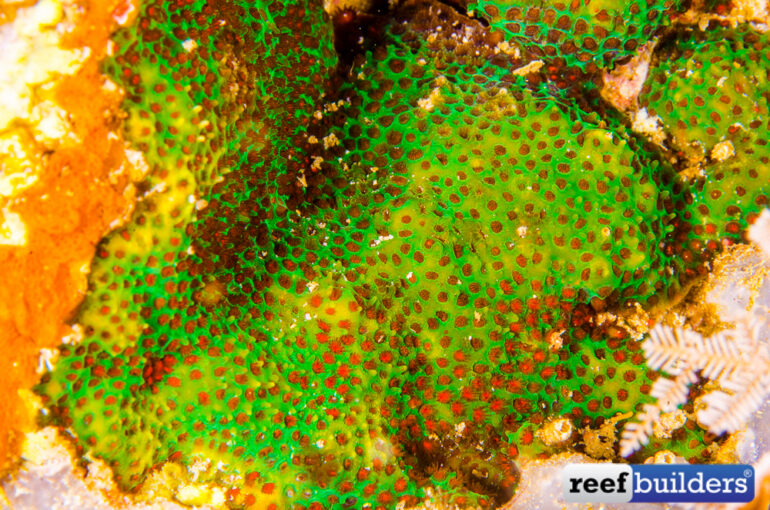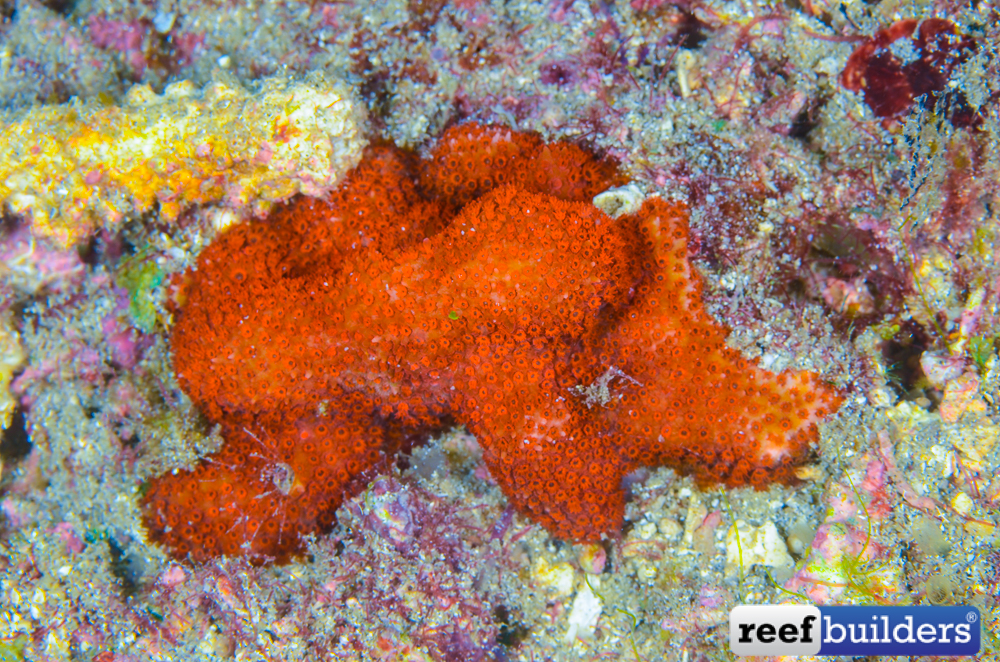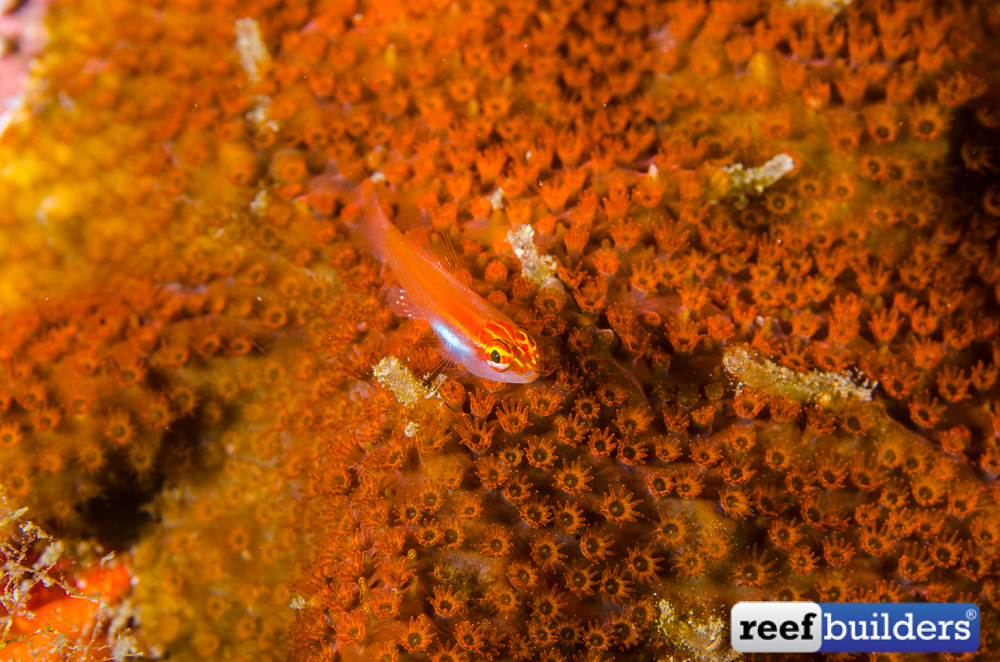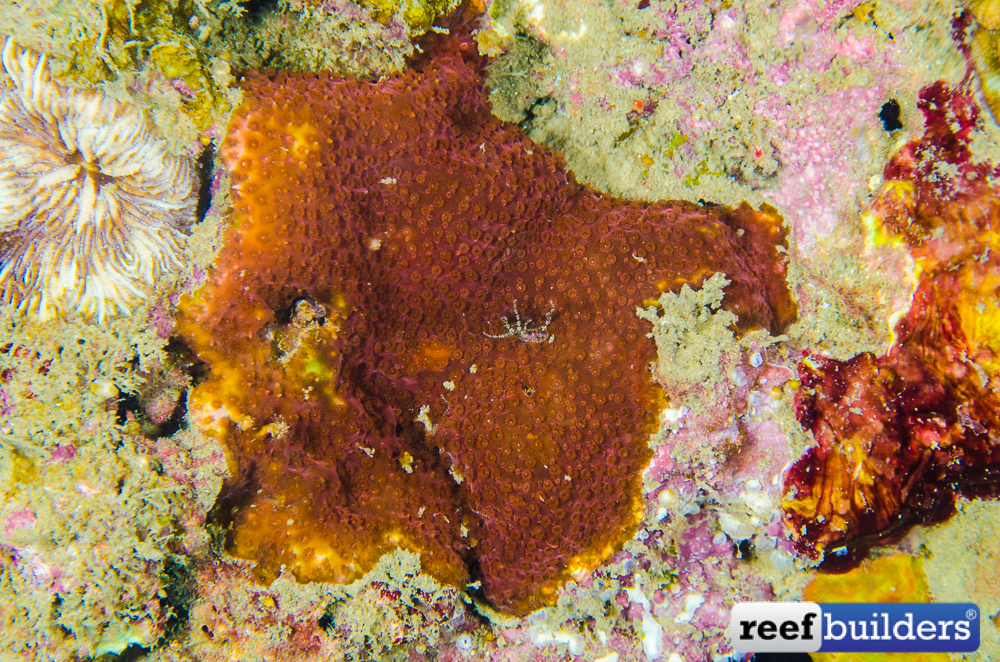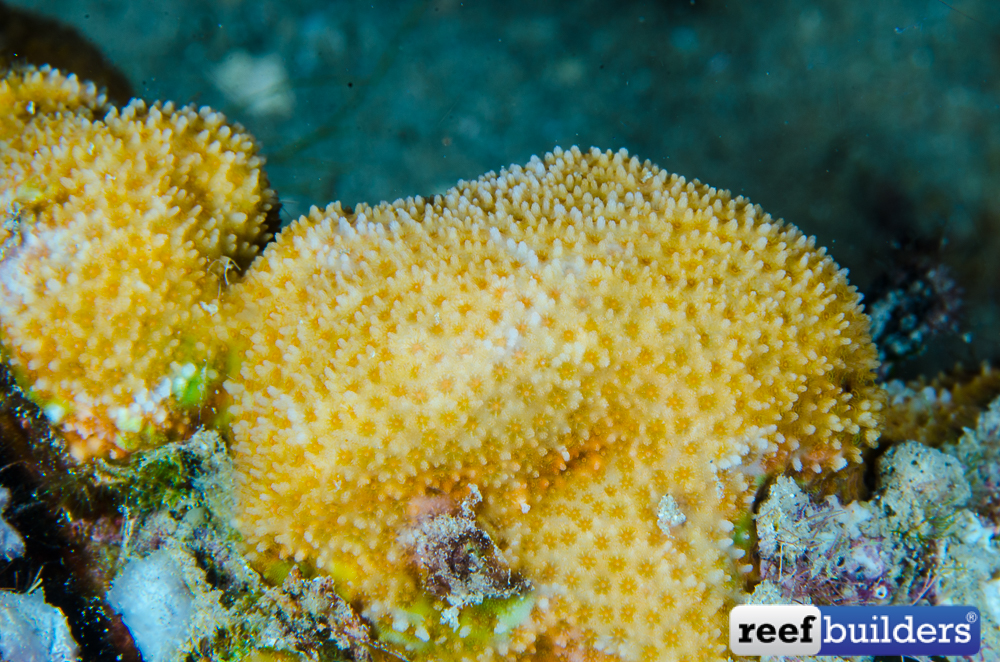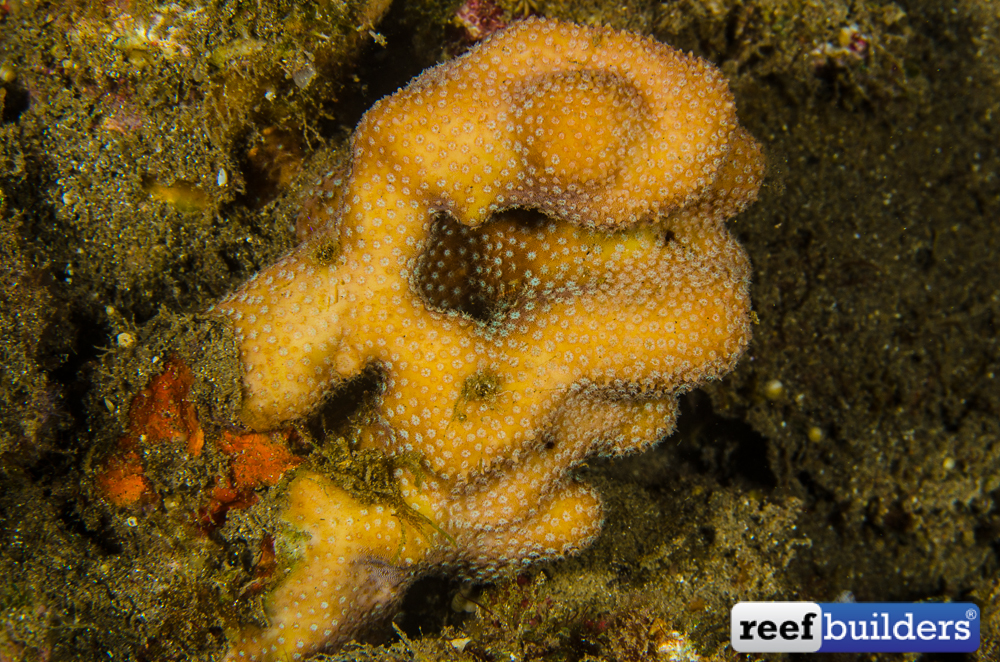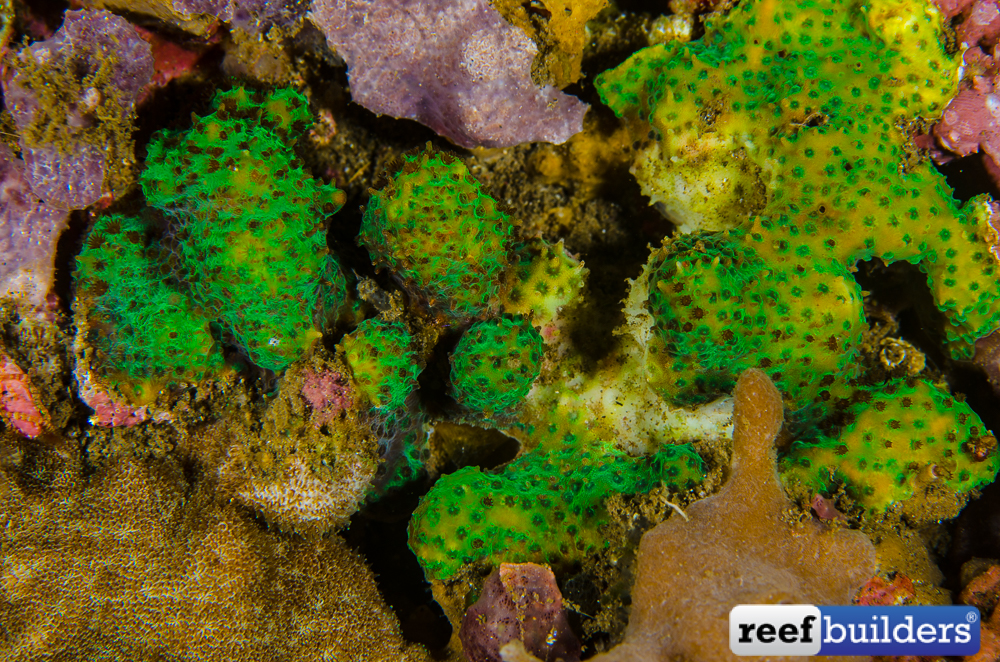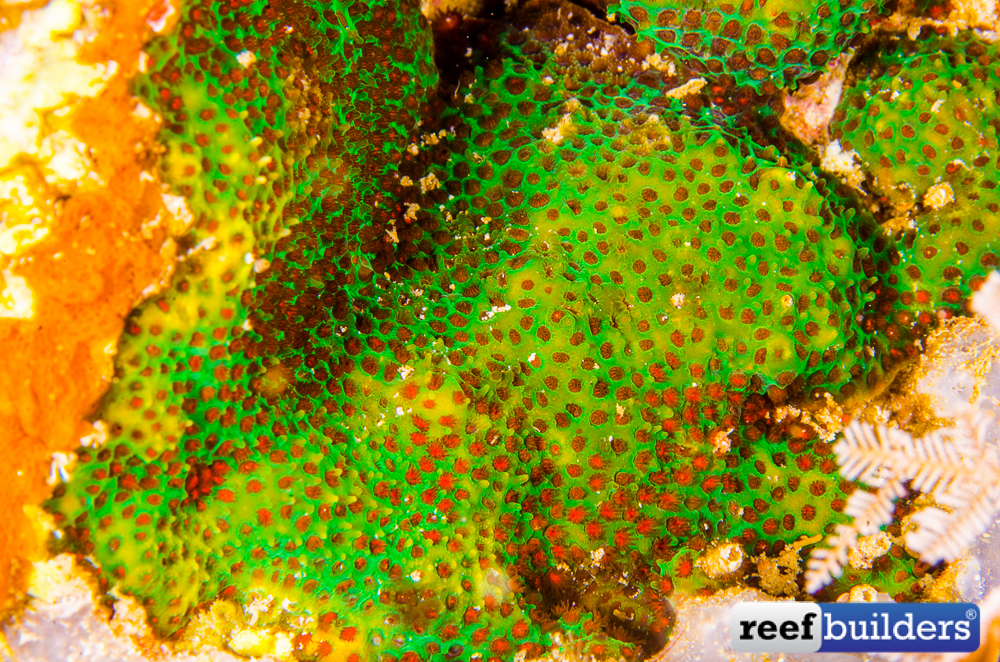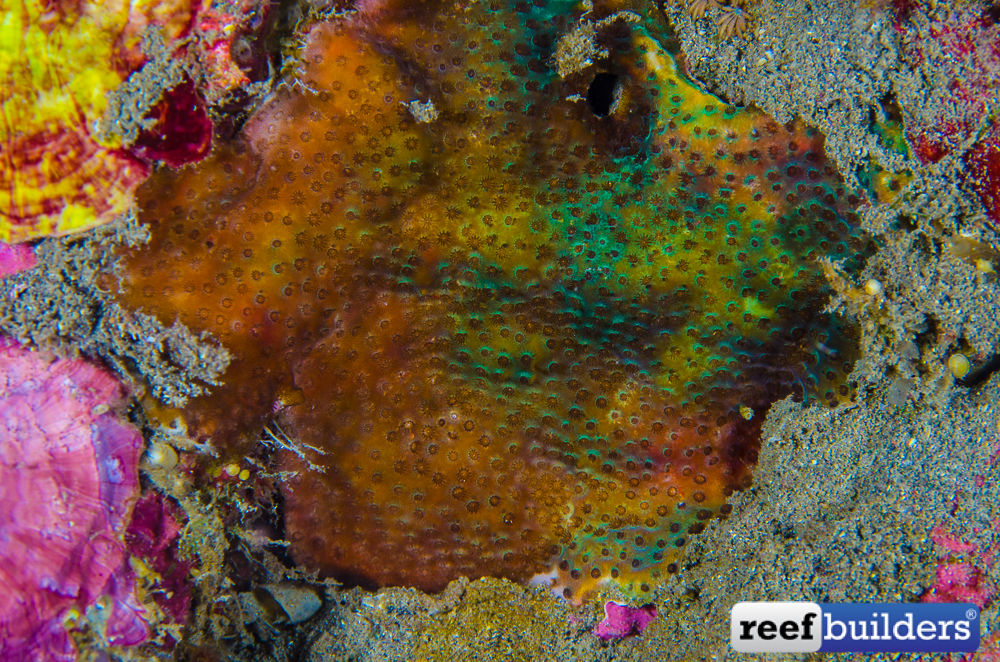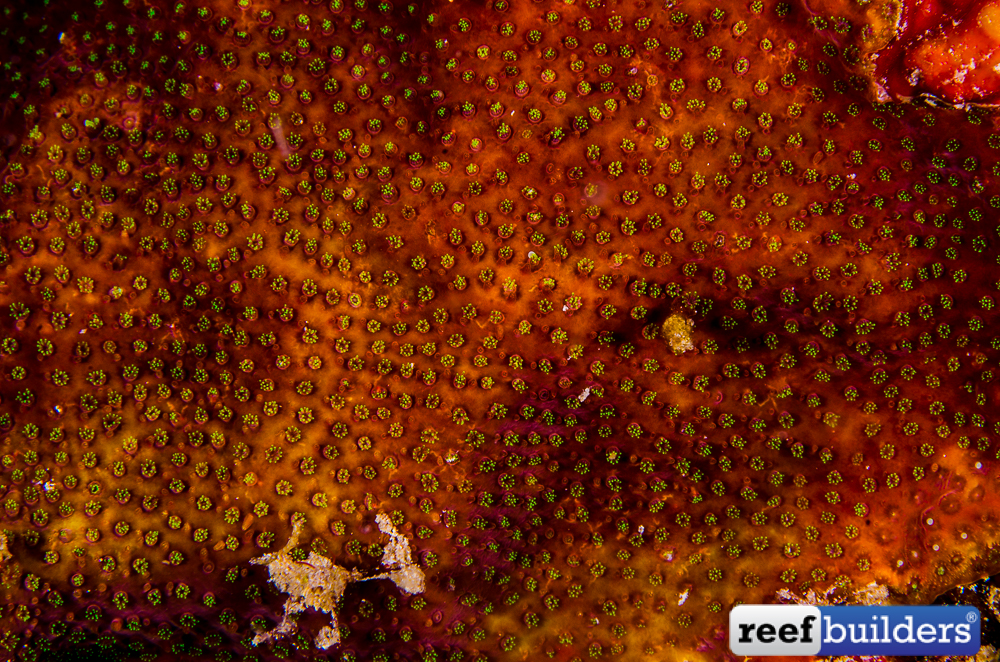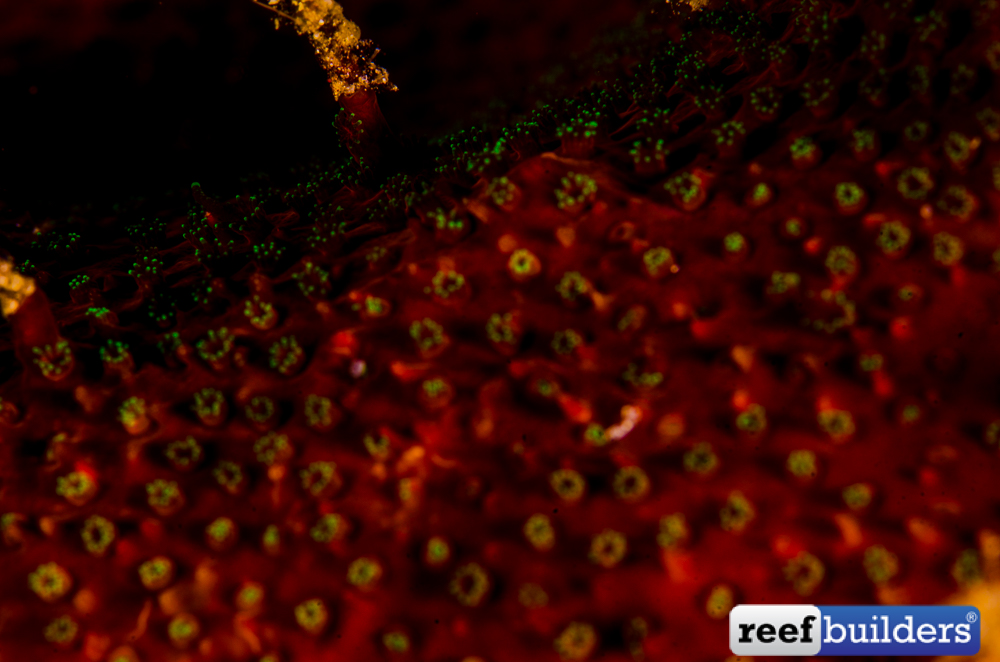Stylocoeniella is an underrated family of amazing aquarium corals, which, often end up in the aquarium world as a hitchhiker along other corals or live rock. This genus is part of an even more discreet, unheard of family: Astrocoeniidae that include other rare beauty corals genera such as Palauastrea or Madracis.
Stylocoeniella is an SPS coral, with polyp only a couple mm wide. It includes 3 different species. But maybe the most commonly encountered is S. armata.
The second most common species is S. guentheri which is not very colorful, but sometimes the nice purplish polyps can be quite interesting and it is definitely worth keeping one piece of this species. It would be very interesting to see how these look under proper blue LED lighting.
Stylocoeniella is very similar in appearance to an encrusting Stylophora, however, Stylocoeniella has the particularity of developing fine spinule. This particularity is also shared in a slightly different form by Stylophora pistillata. Except that Stylocoeniella also develops longer and sharper coenosteum style, or spines, giving this really spiny appearance to the skeleton.
When the polyps are opened, it could be confused with a Porites, but then the spines are easy to spot. S.armata is a very common reef corals, which never grows into large colonies, it’s very seldom found bigger than a couple of inches. Each corallite produces its own long, sharp spine.
It often inhabits cracks in very shallow water or shaded vertical surface in deeper places, like below a bummy or another bigger coral.
The bright colors make it always very obvious, especially the bright red ones, that can be spotted from several meters. Sometimes, we find them also in a bright green color.
But there are two unicorns! Probably that the most common of both is the bright green base with the glowing red polyps. The second is the bright red with yellow tentacles polyps, which is very rare. This coral, however, is produced by few coral farms around the world. These forms are literally glowing underwater, even though they often found living in cracks.
We often find cryptic, very small colony with a few dozen polyps, and barely half an inch growing on the side of another coral or live rock. It’s probably that way that most forms ended up in the aquarium industry. The surprise coral, that you didn’t even notice, but appear out of nowhere in your tank to reward you with the best possible gift!
It’s a pretty easy to care for coral, that grows pretty fast under good flow, and moderate to high lighting. Most likely the fact this coral prefers living in cracks and crevices is a good solution for food capture, as this is where food particles tend to drop in and get stuck. So even though the polyps are quite small, they surely benefit from good feedings.


